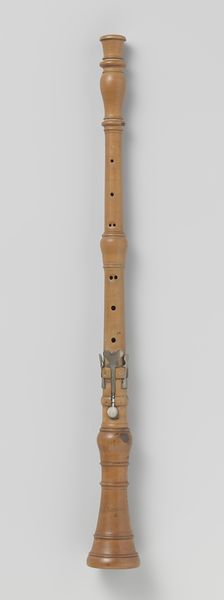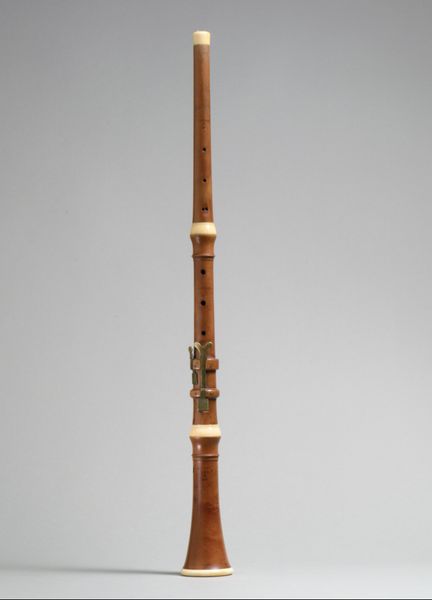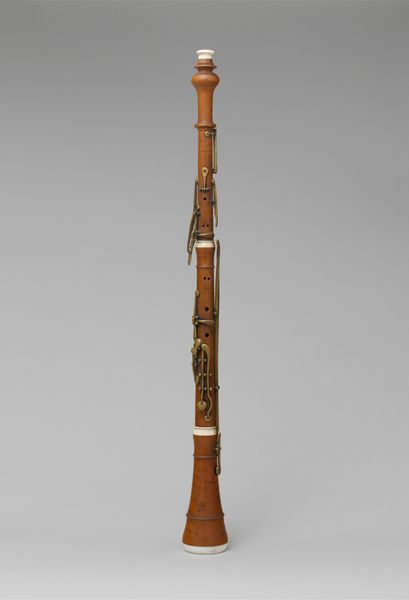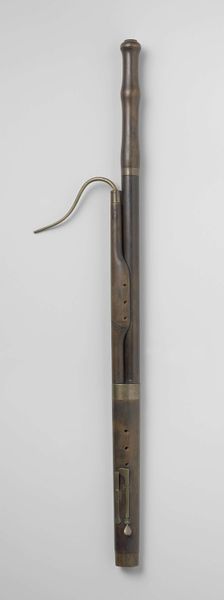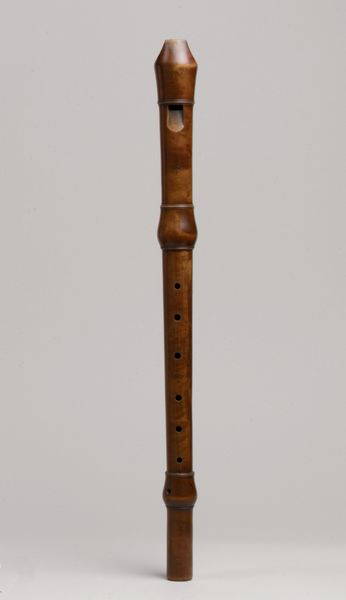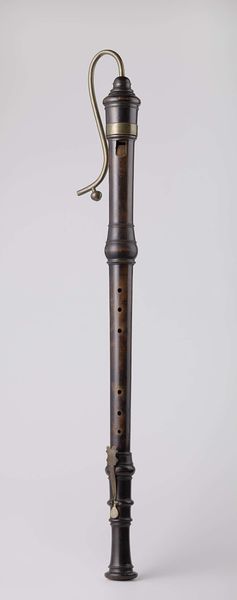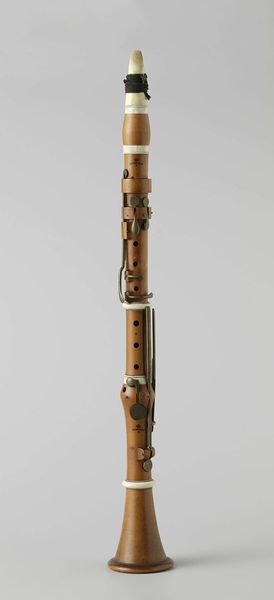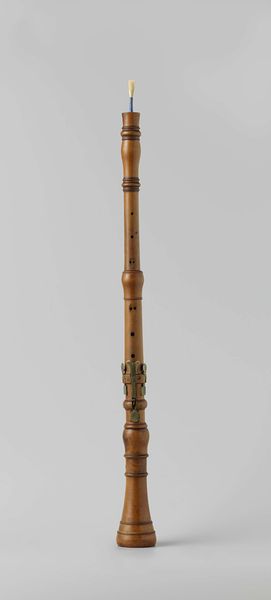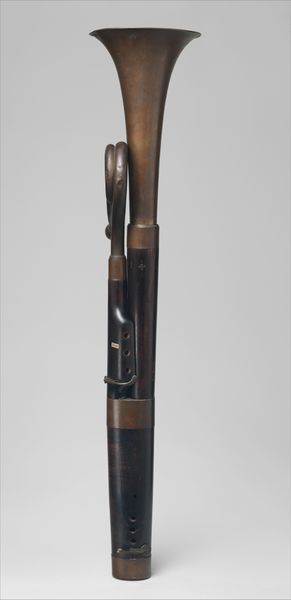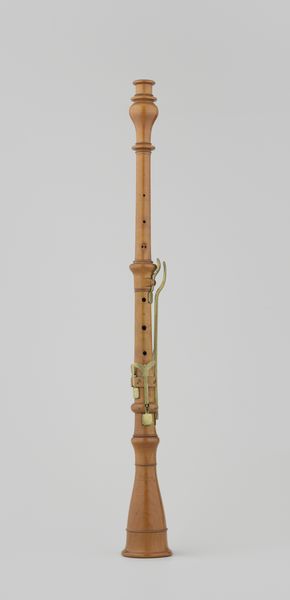
Dimensions: height 50.8 cm, diameter 8.2 cm
Copyright: Rijks Museum: Open Domain
Editor: This is an image of a "Clarinet," dating back to about 1800, crafted by the Noé brothers. It seems to be made of wood and metal. It’s quite simple, almost austere in its presentation. What cultural echoes do you hear when you see it? Curator: The stark presentation does speak volumes, doesn't it? The clarinet, in itself, has powerful connotations. Consider the period – late 18th century, early 19th. What sort of feelings and cultural identity would a Baroque woodwind evoke at that time? It carries a memory of elegance, the aristocratic dance. Think about the Enlightenment values in contrast. The polished wood suggests not just an instrument but an embodiment of those social rituals. Do you see that tension in its form? Editor: I think so, the baroque style is clear in its construction, though somewhat simplified. I can see it perhaps marking a cultural shift away from elaborate ornamentation to something more functional. Curator: Precisely. But it also serves as a vehicle of emotional and artistic expression, it bridges societal layers through melody, as sound becomes the symbolic vessel through which these societal transitions are carried out. Editor: So it embodies a movement. The sound it makes contains history in each note. That is very intriguing. Curator: Indeed. Look closer. How would you describe the patina of the wood and what memories does it suggest? The past lingers materially. Editor: I see age, wear and stories etched into the instrument’s form. Curator: It is the song made visible. And that, in essence, becomes its deepest cultural significance, that in time it outlives the notes.
Comments
No comments
Be the first to comment and join the conversation on the ultimate creative platform.

